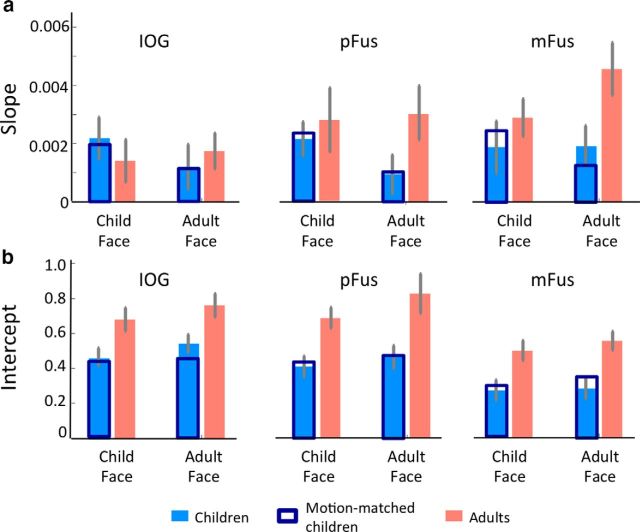Figure 4.
Slopes and intercepts of linear fits to response amplitudes in face-selective regions during the face-morph study. a, Slopes, indicating the neural sensitivity to face identity, were estimated in each subject and then averaged across participants of an age group, separately for each ROI and face stimulus. Slopes were significantly higher in adults than in children (F(1,164) = 5.4, p = 0.021). Orange, Adults; light blue, children; dark blue, subset of children motion-matched to adults. Results remained the same for motion matched subjects (F(1,132) = 5.44, p < 0.05). There was also a significant interaction between age of subject and age of face (F(1,132) = 4.37, p < 0.05) in the motion-matched data. Error bars, SEM averaged across participants of an age group (adults: IOG, n = 12; pFus, n = 12; mFus, n = 12; children: IOG, n = 17; pFus, n = 17; mFus, n = 18). b, Intercepts, indicating the baseline response level for child and adult faces in each of the age groups, were estimated in each subject, and then averaged across participants of an age group, separately for each ROI and face stimulus. Intercepts are significantly larger in adults than in children (F(1,164) = 51.3, p < 0.001). Orange, Adults; light blue, children; dark blue, subset of children motion-matched to adults; results remained the same (F(1,132) = 42.83, p < 0.001). Error bars, SEM averaged across participants within an age group.

